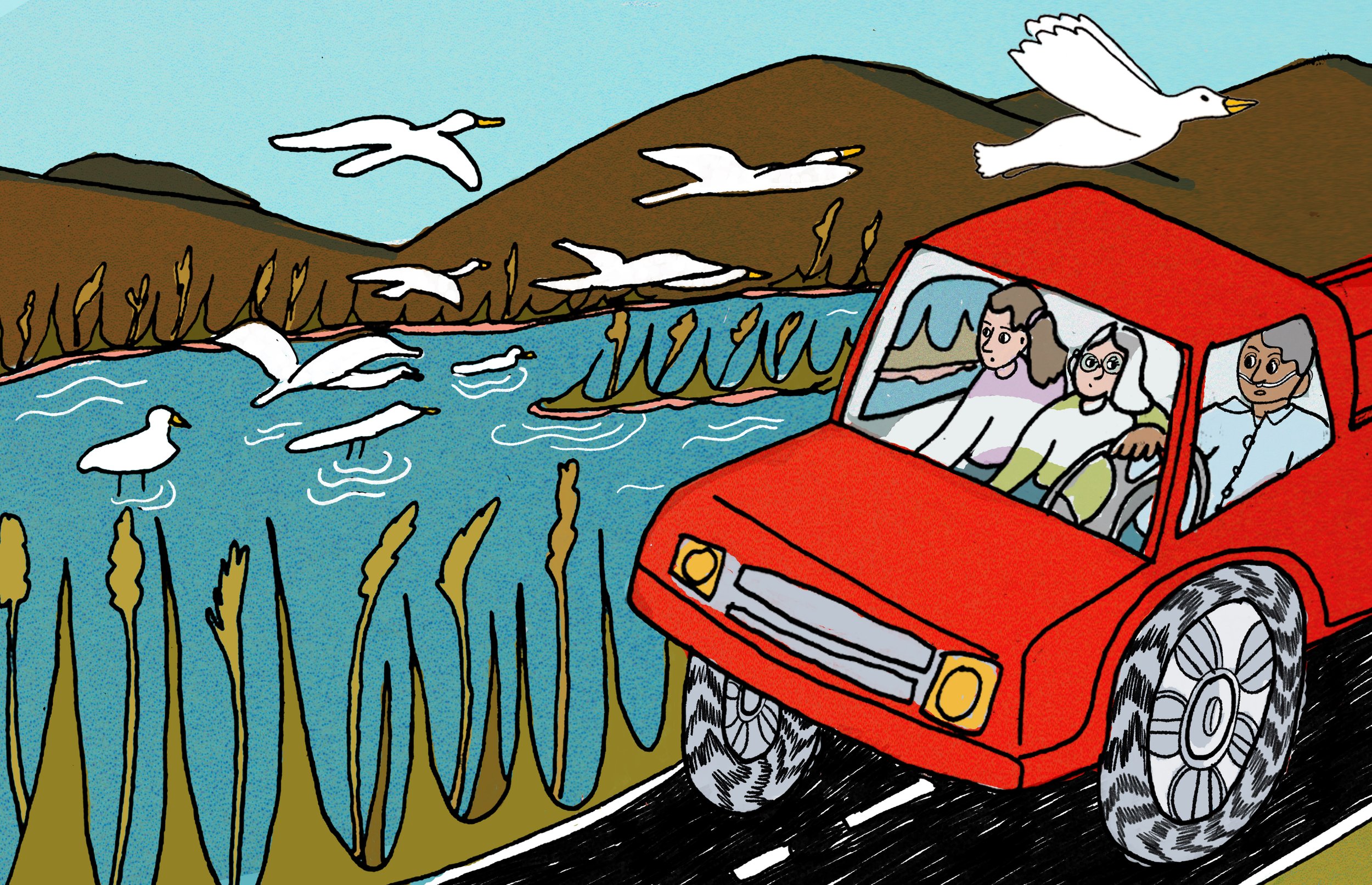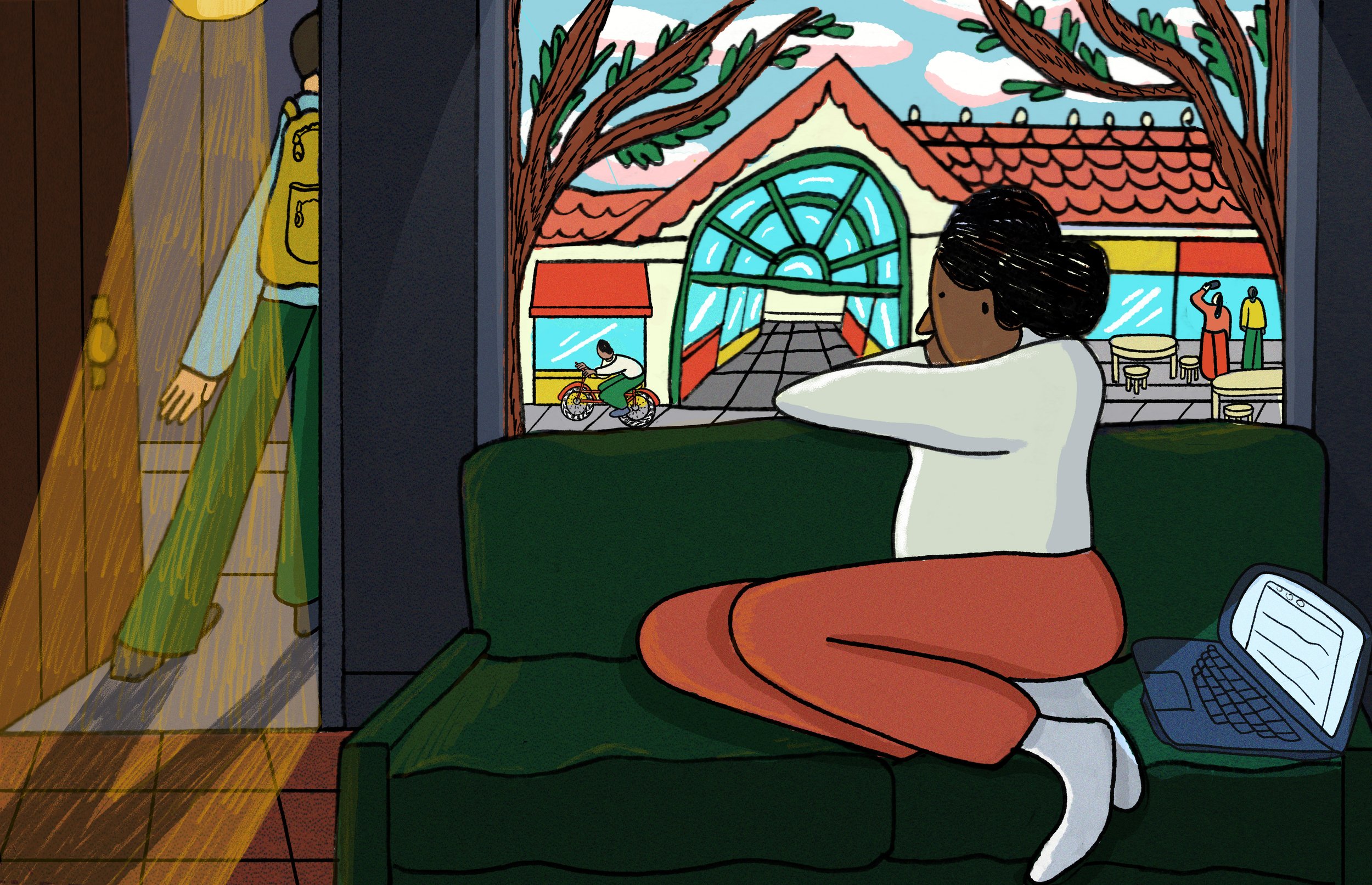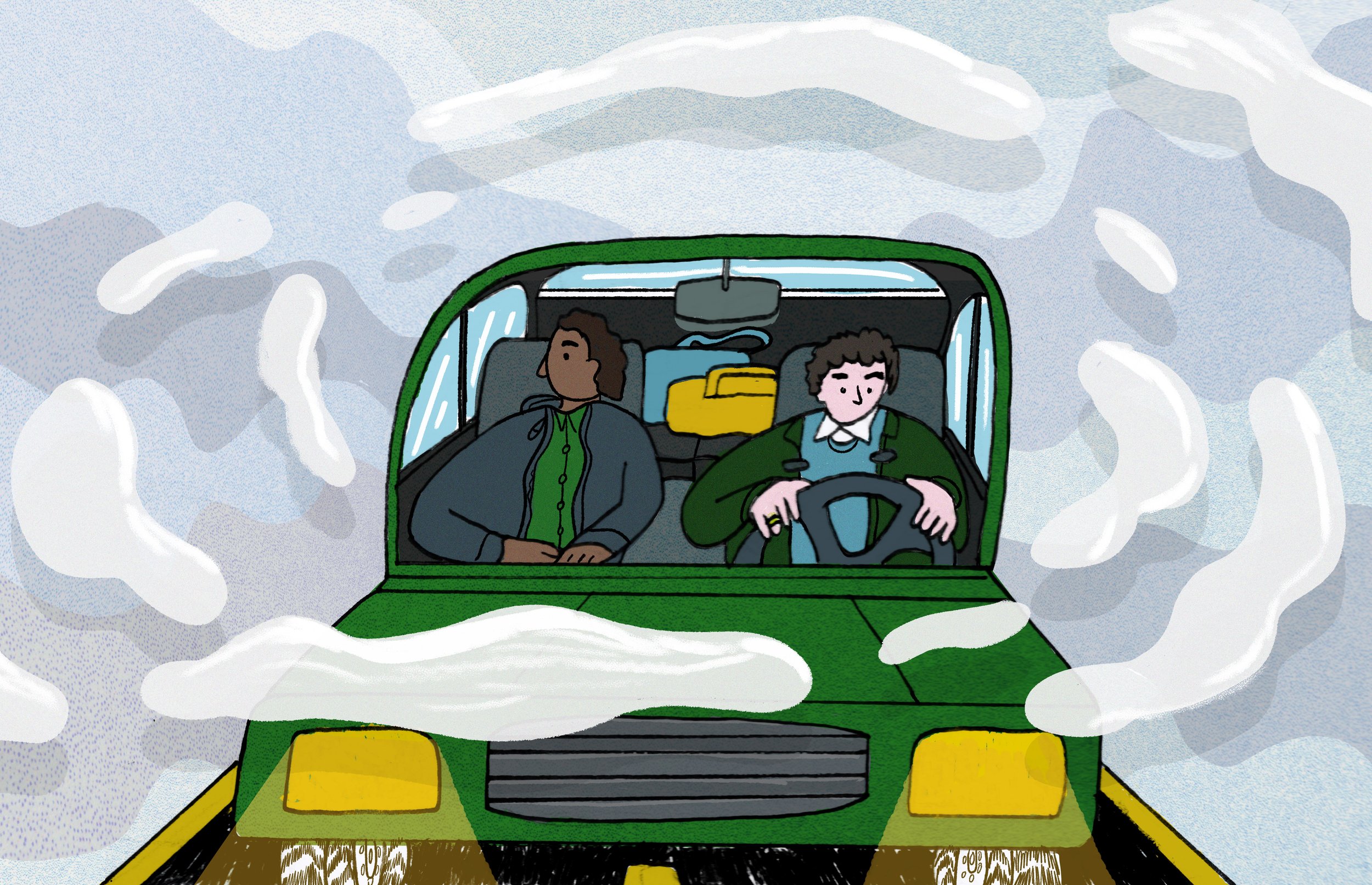10:30 a.m. in Choteau, Montana

10:30 a.m. in Choteau, Montana is the best time to look for snow geese in the barley fields. That’s what Dave says. He picks us up in his old Chevy truck, the one with 375k miles and a “check engine” light that’s been glowing on the dash for over a decade. Dave is eighty-four now—a nasal tube looped beneath his trucker hat, a portable oxygen concentrator humming in the front seat—but the way my grandma looks at him, you’d think they were both nineteen.
See those? Dave points out the window toward a row of silver grain silos. Last week, the wind lifted one straight into the air, blew it across the field, and crumpled it like a tin can. He says two semi-trucks blew clean over on the highway. Says they’ve gotta repaint the side of the church cause the wind sandblasted it with tiny stones. But this morning there’s not even a breeze, and so far, no geese.
The barley fields stretch out in every direction: a rolling brown mat cut only by narrow dirt roads. When it rains, forget about it, Dave tells us. You can’t even drive on one of these roads if someone pees on it. Choteau dirt is soft and deep; it clings to our boots, the wheels of the truck, the dog’s fur. Dave, I ask, what do you like most about living here? He glances at me in his rear-view mirror and smirks. He can’t decide. It’s either the mountains, ’cause he can’t live without ’em, or the lack of people, cause he can’t live with ’em. Recently though, it’s been getting worse. The traffic downtown is driving him crazy. My grandma says he’s the crazy one: There’s a single four-way stop, and she’s never seen more than two cars approach it. That’s the thing, Dave says. If two cars approach it, no one knows who goes first. Their eyes meet, and I wonder if it’s traffic he’s still talking about.
A few days prior, my grandma and I had loaded her pickup with camping gear and driven across the Rocky Mountains for three nights at Freezeout Lake. We came for the birds. Every March, hundreds of thousands of snow geese pass through as they migrate north from the California wetlands to their summer breeding grounds in the Canadian Arctic. How come you never made this trip with grandpa? I asked her as we drove. She sighed. He just wasn’t into this sort of thing, but it had always been on her bucket list to see them fly. After meeting Dave, I wondered if he was another reason we’d made the trip. They dated over fifty years ago, before she married my grandpa; now, I was curious if they might pick up where they’d left off.
After an hour in the barley fields and still no geese, we decide to call it quits. We hit town for glazed donuts and thick mugs of coffee at Dave’s favorite bakery. He reckons we’ll have to try again tomorrow. You’ve got to spot ’em at just the right time, he says. After they’ve lifted from the lake, but before they’ve vanished into the distance. My grandma licks a speck of sugar from her finger and studies his face, as if tracing the path of his flight. As we climb back into his truck, I ask Dave how the snow geese know when it’s time to migrate. He says they’ve got internal clocks: instincts that measure daylight and tell them when it’s time to move along.
That night, as we lay on the little fold-out bed in her camper, I tell my grandma I hope I’m not “third-wheeling.” She grins and bats me with the edge of her blanket, then falls quiet. In the darkness, we’re met by a chorus of honking geese. A stiff breeze sweeps the lake, rustling the marsh grass and cattails. Beyond the water, the white slope of the Rocky Mountain Front lifts like a plume in the night. As I listen to my grandma’s soft breathing beside me, I consider if, like geese, we’re always metering the light. If maybe, nested deep within us, the same instinct that sends us flying from one place might—decades later—route us back to a thing we’ve left behind.
About the Author
Annika Berry is a writer and visual artist based in Central Coast California. Her work combines archival research, oral history, and cross-genre experiments in biography and fiction. She has exhibited at SITE Santa Fe, MoCA Arlington, and Olympia Gallery in New York. Annika is currently pursuing a PhD in Creative/Critical Literature at the University of California, Santa Cruz.
Illustration by Jane Demarest.
Edited by Aube Rey Lescure.











